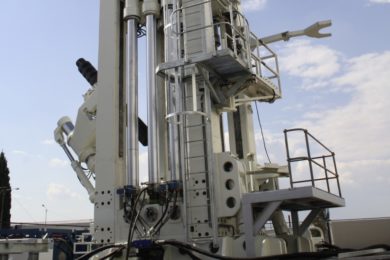In August 2014, BHP Billiton (BHPB) announced that it intended to demerge its aluminium, coal, manganese, nickel and silver assets into a new, independent global mining and metals company. In December, it was announced that the proposed company will be branded South32, to reflect the fact that its major operations will be in the southern hemisphere, in Australia and South Africa. Last week saw the publication of a demerger prospectus which provided more detail about the spin-off:
- South32 will be a top-10 global mining company headquartered in Perth, Western Australia, and will produce 10 commodities across five countries
- After the demerger, which will cost an estimated $738 million, the company will have a gross asset value of $26.7 billion
- South32’s portfolio of assets made a pre-tax profit of $422 million in 2014 on revenues of $10.4 billion
- The company will begin life with a $1.5 billion credit facility provided by a syndicate of banks to ensure that it has adequate liquidity
- BHPB has loaded South32 with less debt than expected, $674 million
- Shareholders will vote on the demerger in May
Roskill says “the creation of South32 has the potential to significantly impact the manganese and nickel markets.
“With regard to nickel, BHPB is only partially divesting its portfolio in this commodity. South32’s portfolio will include the Cerro Matoso operation in Colombia, but not BHPB’s Nickel West operations in Australia. The Cerro Matoso operation has a nominal capacity of around 50,000 t but actual production has exceeded this amount in recent years. It produces ferro-nickel granules containing 45% Ni. The operation is known to be one of the most cost-effective laterite mining operations in the world, as ore in the deposit is found in a comparatively small area of thick layers, making it easy to mine. Abundant hydroelectric power and local natural gas have contributed to low energy costs.
“South32 will, therefore, inherit the more stable side of its nickel business. BHPB was seeking to divest its Nickel West operations in 2014, but the division was valued at only A$300-$800 million by analysts, owing to the division’s environmental liabilities. In November, despite interest from Jinchuan and Glencore, BHPB announced that it had failed to secure the sale of the business “on an acceptable basis”. Although the Nickel West operations are slated to remain part of BHPB’s non-core portfolio, with further job cuts announced in February 2015, the future of its operations remains uncertain.
“With regard to manganese, South32 will take control of all BHPB’s assets and, therefore, be the largest manganese ore producer in the world. As of 2014, BHP Billiton accounted for 22% of mine production. In Australia, BHPB is a producer of manganese ores through Groote Eylandt Mining Co, and manganese alloys through Tasmanian Electro Metallurgical Co. In South Africa, BHPB controls two manganese ore mines (Mamatwan and Wessels) and one large manganese alloy smelter (Metalloys).
“The most significant outcome of the demerger in the context of the manganese market is likely to be the importance of South32’s manganese assets to its business. In terms of EBIT, BHPB’s aluminium, nickel and manganese business represented only 1% in 2014, compared with 53% for its iron ore business. Manganese will, therefore, be a much more significant part of South32’s revenue and profit base. This is likely to prompt new, strategic approaches from the world’s biggest manganese miner.”









